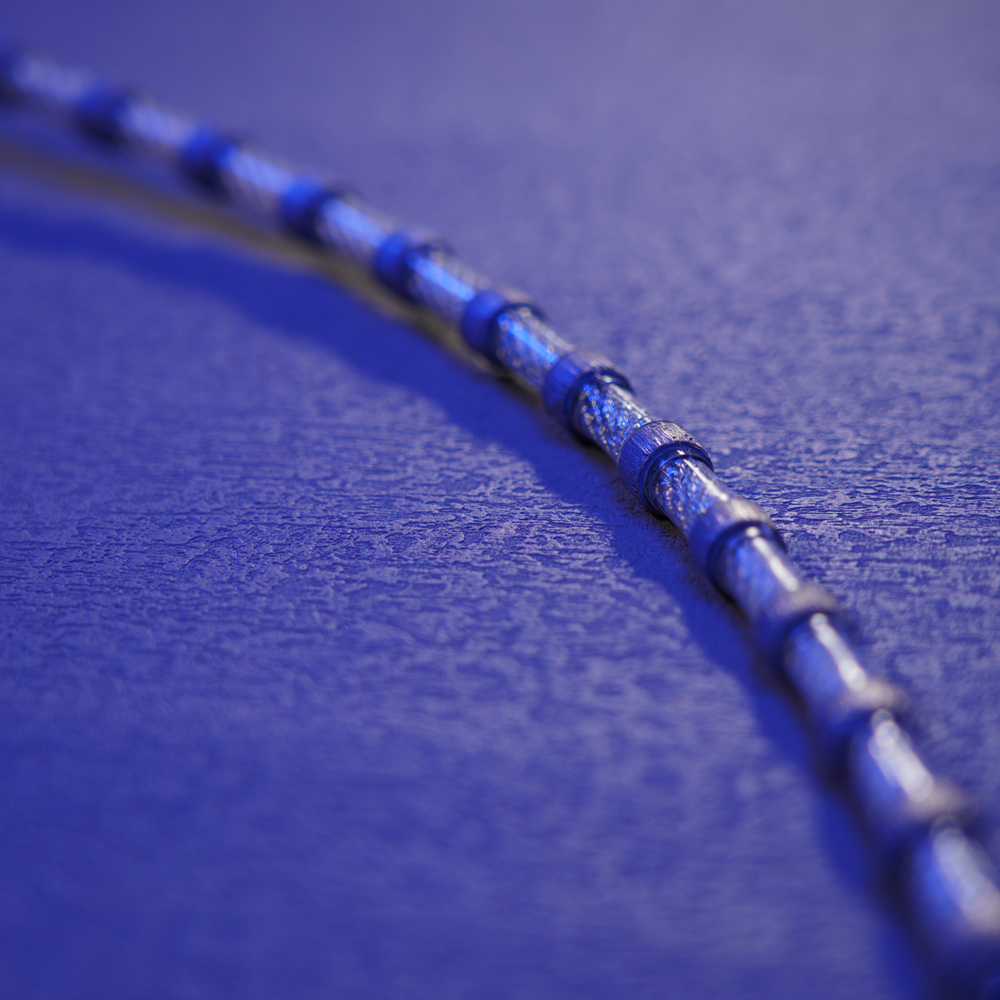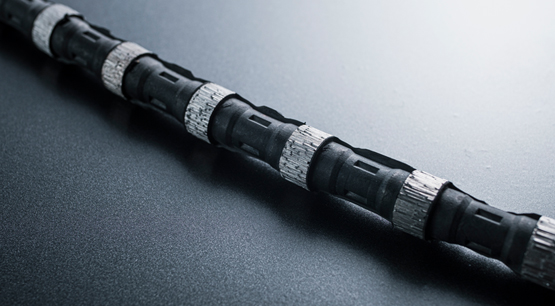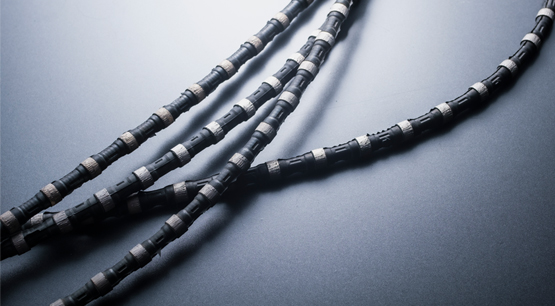Diamond wire saws may experience the following failure modes during use:
1: Diamond drop: The cutting ability of diamond wire saw mainly depends on the hardness and sharpness of diamond particles. Under high load and high temperature conditions, the diamond particles may be detached or worn, resulting in reduced cutting ability. It mainly shows the following situations:
1) Decreased cutting efficiency: Diamond shedding will weaken the cutting ability, making it difficult and slow for the wire saw to cut stone or other materials.
2) Rough cutting surface: When the diamond grains fall off, the cutting surface of the wire saw may become rough, with obvious scratches or uneven cutting lines.
3) Increased noise and vibration: After the diamonds fall off, the wire saw may generate more noise and vibration during the cutting process, which brings inconvenience and uncomfortable experience to the operator.

Cutting material overheating: Diamond chipping will reduce the cutting efficiency of the wire saw, requiring more force and time to complete the cutting task, which may cause the cutting material to overheat and even cause burns.
Broken wire: Diamond wire saws usually consist of multiple strands of wire rope that support and hold the diamond beads. In long-term high-frequency use, the wire rope may be fatigued, fractured or damaged, resulting in the failure of the wire saw. The following are the main manifestations of wire breakage:
1): Cutting Interruption: Wire breakage will cause the diamond wire saw to stop or stop suddenly during the cutting process, making it impossible to continue the cutting work.
2): Unusual Noise and Vibration: When a wire breaks, a wire saw may produce unusual noise and vibration, unlike the normal cutting process, because the broken wire does not provide adequate support and stability.
3): Loose or deformed wire: When the wire breaks, the wire may become loose or deformed, unable to maintain its original tight structure and shape.
4): Abnormal cutting surface: wire breakage may cause abnormal marks or uneven cutting lines on the cutting surface, affecting the cutting quality and effect.
5): Visible broken wire: When inspecting the wire saw, the broken steel wire can be directly observed, usually the broken end of the steel wire or an obvious broken point.
3: Fixed material fatigue: The fixed material (such as rubber or plastic) in the diamond wire saw may also experience fatigue cracking or aging, resulting in the failure of the wire saw. The specific performance is that the rubber is cracked, or the spring is deformed, or the plastic is obviously damaged.
4: The wire saw is loose or deformed: During use, the diamond wire saw may be subject to greater force and vibration, which will cause the wire saw to loosen or deform, affecting the cutting effect and safety.
In order to reduce the failure of the wire saw and prolong its service life, the following points need to be paid attention to:
1):Choose high-quality diamond beads and wire rope to ensure its quality and durability.
2): Use and operate the wire saw correctly and avoid overloading and excessive vibration.
Regularly check and maintain the wire saw, and replace worn or damaged parts in time.
Use proper cutting parameters and coolant to avoid excessive heat and wear.
The failure modes and lifespan of a wire saw are affected by many factors, including cutting conditions, material properties, quality of the wire, etc. Regular inspection and maintenance of wire saws and proper preventive measures can effectively prolong their service life and improve cutting results.








